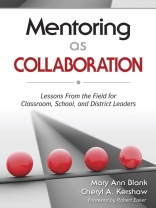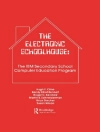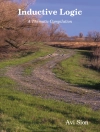‘This is the book for administrators who want to retain their novice teachers and strengthen their pedagogical abilities to ensure student success. Blank and Kershaw provide the complete guide to planning, initiating, managing, and solving the dilemmas associated with mentoring.’
—Dave F. Brown, Coauthor, What Every Middle School Teacher Should Know
‘Blank and Kershaw have put together a handbook that should be on the desktop of anyone managing an induction program, preparing mentors, or serving in a mentoring role themselves.’
—Kenneth R. Howey, Research Professor
University of Cincinnati
Transform intermittent one-on-one teacher mentoring into systematic, school-based new teacher support!
High-quality mentoring can have a direct, positive impact on instructional and student success when school-based teams of administrators and teacher leaders work together to promote shared ownership for new teacher success.
Mentoring as Collaboration shows school and district leaders how to develop a collaborative, team-based mentoring program that helps retain new teachers, improve student achievement, and boost school performance. Mary Ann Blank and Cheryl A. Kershaw present a practical, field-tested model that clearly defines roles, expectations, and experiences for new teachers, mentors, and school leaders and builds on the research on effective teaching, leadership, and organizational development. Administrators and teacher leaders in any school or district can use this comprehensive how-to guide to:
- Develop, assess, and sustain mentoring programs
- Attract and retain talented teachers
- Develop teacher leaders
- Create energized learning communities
With step-by-step guidelines and real-world scenarios, this resource provides all the structures, policies, and practices that school and district leaders need to establish a systematic mentoring program to help beginning teachers develop confidence, competence, and professional skills.
Tabella dei contenuti
List of Reproducible Figures
List of Figures and Tables
Foreword by Robert Eaker
Preface: Why We Wrote This Book, and Why Educational Leaders in Classrooms, Schools, and Districts Need It!
Acknowledgments
About the Authors
Part I. Mentoring: Putting the Research Into Practice
1. Introduction
2. Getting Started: Teacher Mentor Program Components Self-Assessment
Part II. Designing or Strengthening Your Teacher Mentoring Program
3. How to Promote a Schoolwide Commitment
4. How to Build on Common Goals
5. How to Coordinate Your Program With a Mentor Core Team (MCT)
6. How to Define Roles for MCT Members
7. How to Select Mentors and Assignments
8. How to Ensure New Teachers′ Commitment to Mentoring
9. How to Coordinate Support to New Teachers
10. How to Promote Professional Learning and Schoolwide Collaboration
11. How to Provide Time, Resources, and Support to Mentors
Part III. Implementing Your Mentoring Program
12. How to Develop a High-Performing MCT
13. How to Identify & Address the Professional Development Needs of Mentors
14. How to Identify & Address New Teacher Needs
15. How to Meet New Teachers′ Social, Emotional, and Professional Needs: Mentor Strategies
16. How to Coach New Teachers for Instructional Effectiveness: Coaching Strategies
17. How to Ensure Your Mentor Program Is Achieving Desired Results
Part IV. Assessing the Impact of Your Mentor Program
18. How to Collect Meaningful Data on an Annual Basis
19. How to Use Data for Program Improvement
20. How to Address Challenges and Celebrate Success
Part V. Growing and Sustaining Your Mentor Program: Mentoring at a Higher Level
Resources
References
Index
Circa l’autore
Carol Kershaw has served as director of University of Tennessee’s Urban Impact initiative, which was funded through a federal grant seeking to improve teacher quality. She previously taught English and remedial reading at Fulton High School for nine years. A graduate of Bearden High School, Kershaw earned a doctorate in curriculum and a master′s degree in curriculum and instruction from the University of Tennessee. She earned a bachelor′s in English education from Arizona State University.












